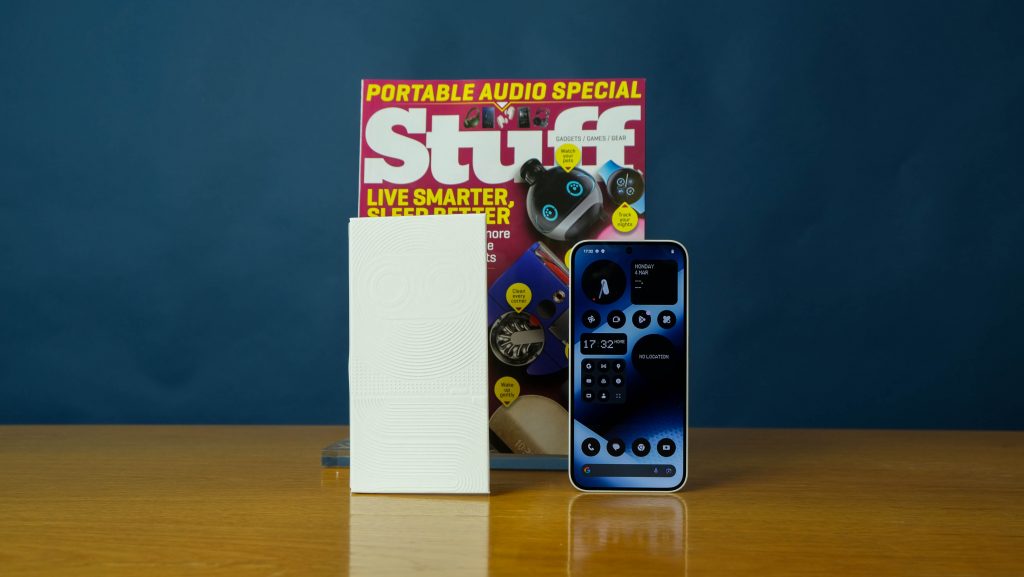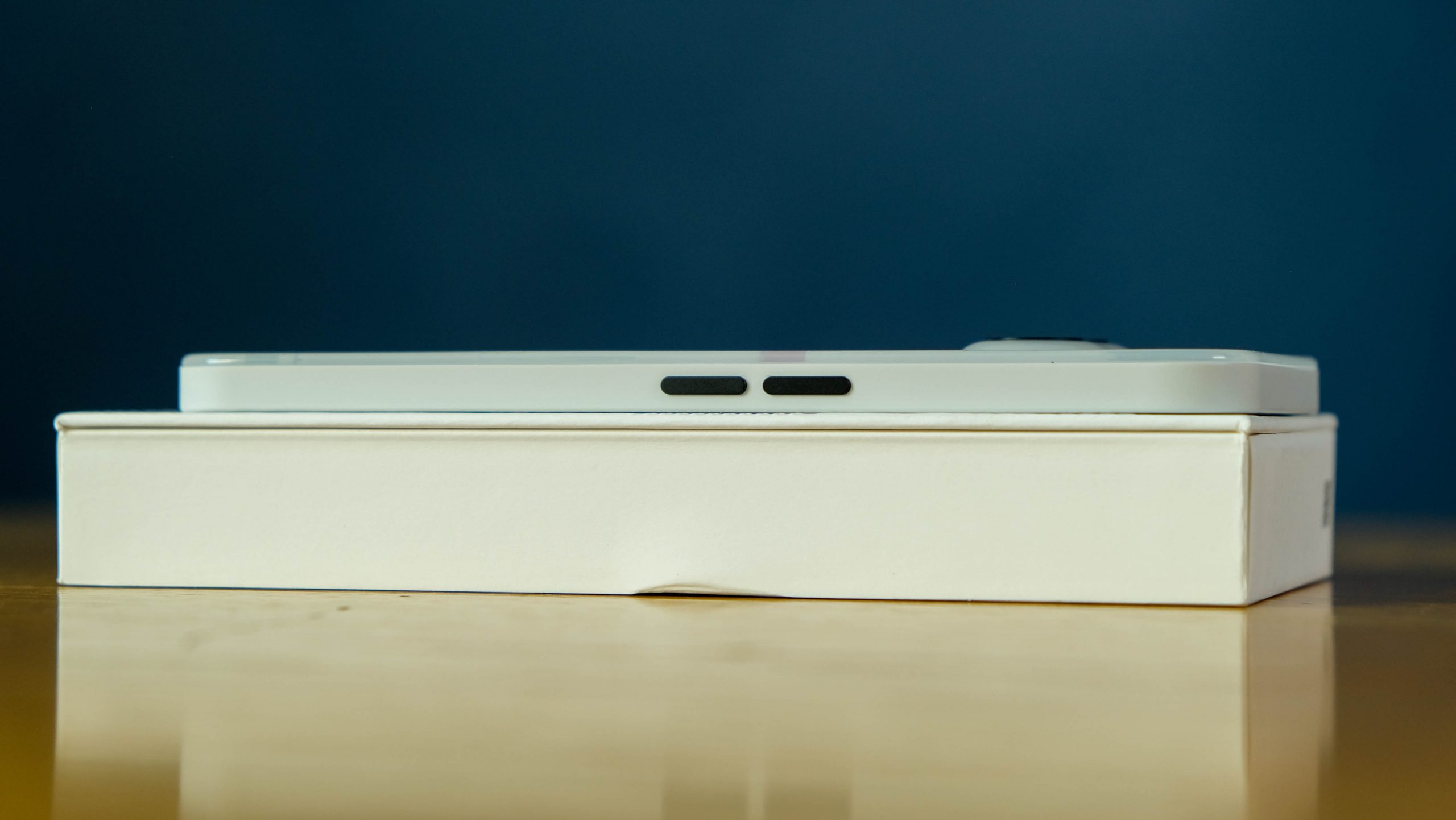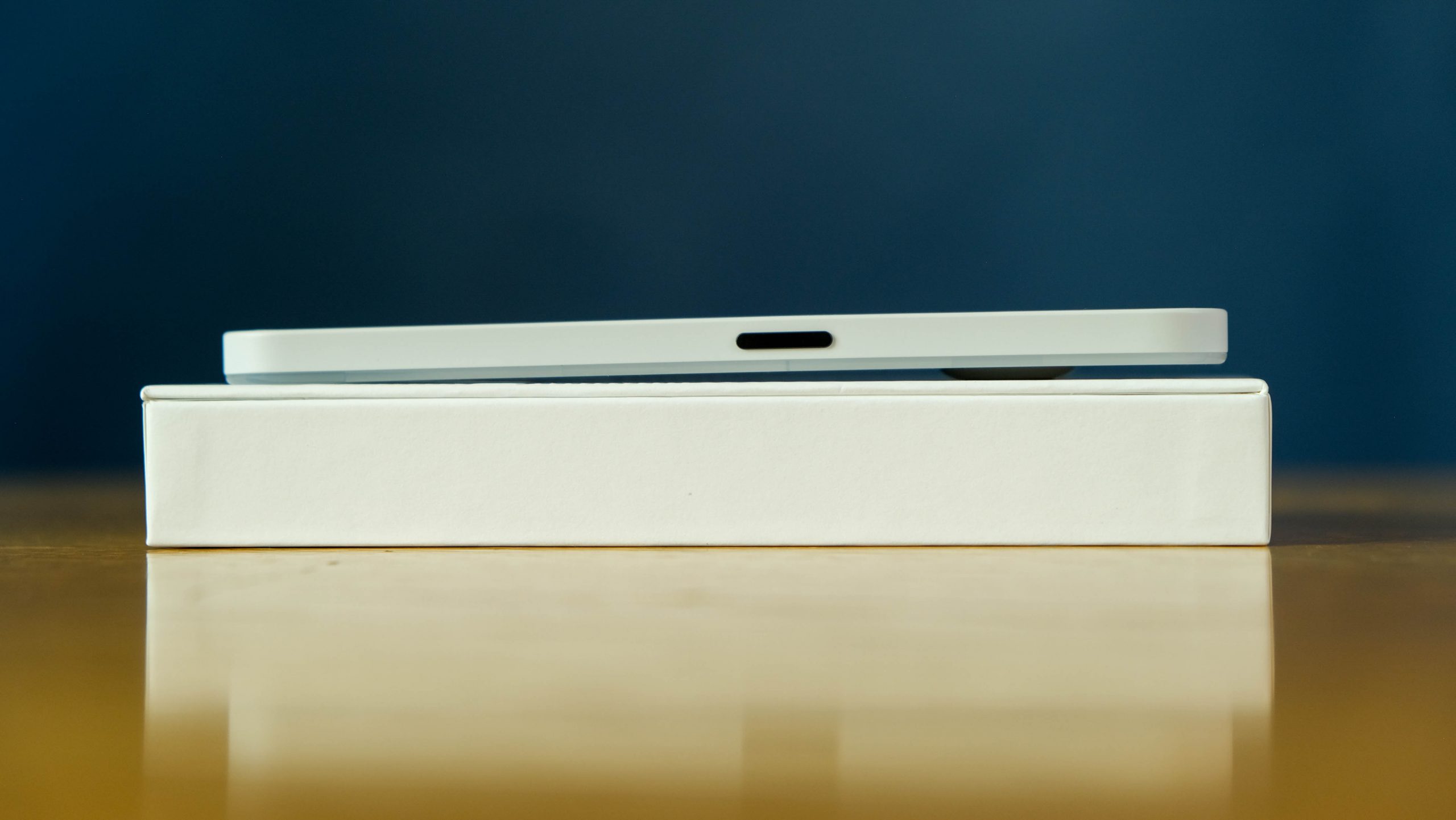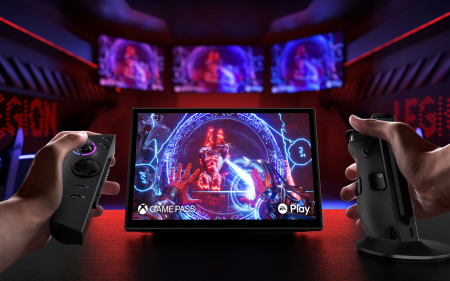There's no such thing as a perfect phone but the Nothing Phone 2a makes a decent crack at it. A unique design, subdued but friendly interface, and solid construction and specs make is a serious contender at any price point. That one of these can be had for just R10,000 is almost remarkable. That fact should make any device at this price point (and even higher) very nervous indeed.
-
Design
-
Performance
-
Battery
-
Camera
-
Value
It’s not often that South Africa gets a new smartphone brand launching and it’s less often that one of the first offerings will make every competitor nervous. That’s what you can expect from the budget-focused Nothing Phone 2a, which drops shortly in South Africa starting at R8,700. Stuff didn’t have the more affordable version — our review model will set buyers back R10,000 at retail — but it’s still inexpensive enough to make even the most refined Chinese brand nervous. A Korean brand too, perhaps.
Nothing is a British company, legally, but it was launched by one of the (Chinese) founders of OnePlus. There is a selection of recognisable tech names attached to the company and relatively few devices in their stable but, as the Nothing Phone 2a demonstrates, there are remarkably few teething troubles in evidence.
Is this the unicorn of smartphones, capable of taking on flagships while costing half as much? We wouldn’t go that far but it punches above its price point. It feels fresh, a description rarely possible in 2024’s smartphone market.
Nothing but budget
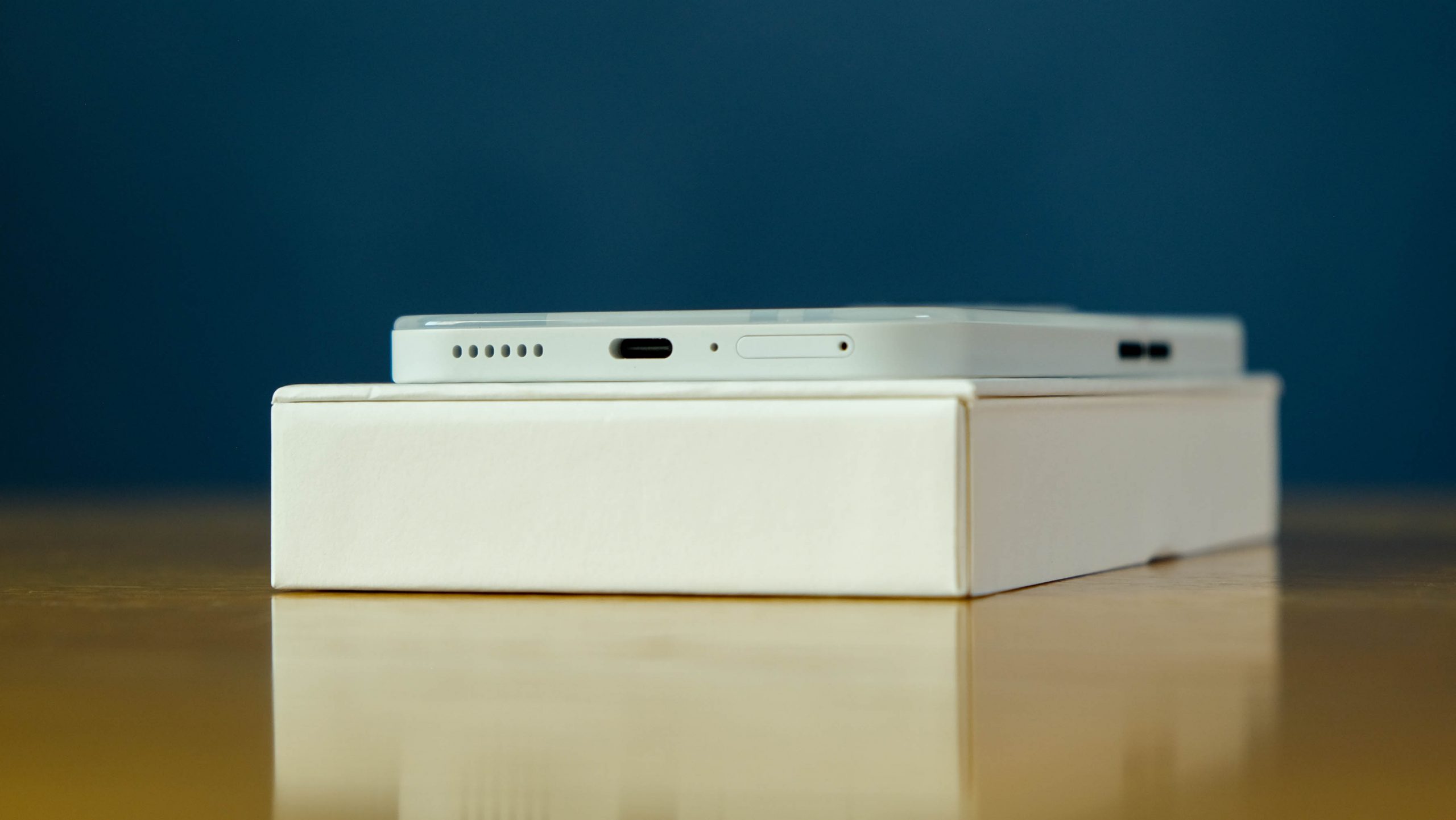
This is the first time we’ve had a Nothing phone in for review so there’s nothing historical to compare it to but we’ve also got the Nothing Phone 2 in. Like its predecessor, the (2) features metal, glass, and a polycarbonate back. The Phone 2a, on the other hand, is polycarbonate all the way. A durable plastic replaces the metal edge and fewer glyph lights live below the clear back panel that the pricier model features.
The design isn’t radically different. There’s only so much you can do with a rectangle, after all. But the back panel features a circuit design that offers hints at the components working underneath. You’ll probably leave the Nothing Phone 2a face down much of the time, relying on those glyph lights — which signal everything from notifications to timer countdowns — to impress lookers-on. And it probably will.
The dual rear cameras live side-by-side in an almost modest bump and the volume rocker is at the midpoint on the left-hand side. The power button/camera summoner is directly opposite. A USB-C charge slot, the SIM tray, and speaker vents reside on the bottom edge.
Peering into Nothing
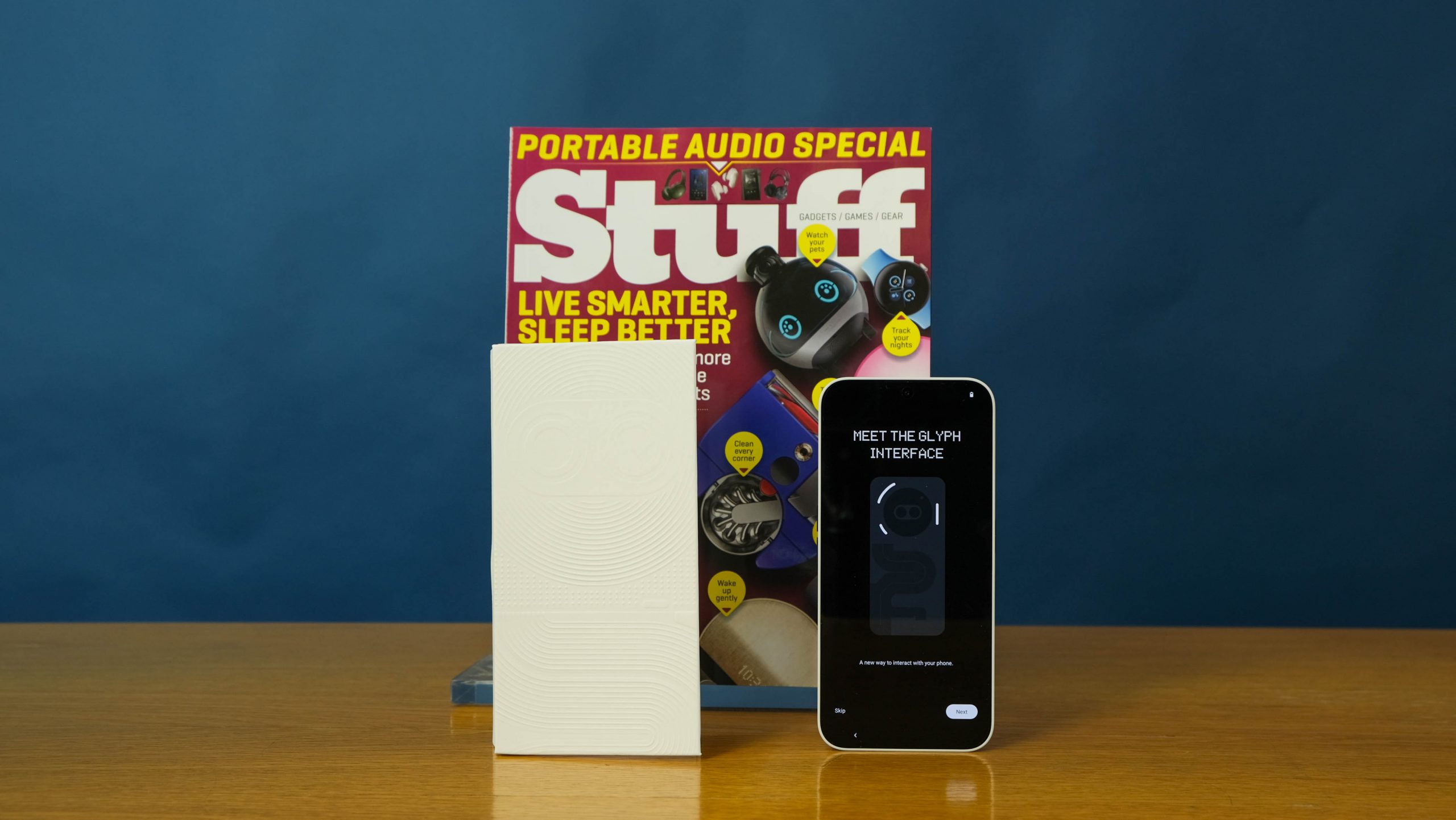
You’d expect a budget smartphone — we’d classify this one as coming in right at our cutoff for these things — to skimp on… something. While the specs here aren’t cranked up to ludicrous levels, the performance they offer is finely balanced. Users won’t find cause for complaint at any point in their experience.
The display goes surprisingly hard. The 6.7in AMOLED panel features a 1,080 x 2,412 resolution, peak brightness of 1,300 nits, and support for HDR10+. A full 120Hz refresh rate pitches this screen right up there with the best Samsung and friends has to offer, in a device less than half the price.
A MediaTek Dimensity 7200 Pro chipset sits in the middle of the Nothing Phone 2a, backed (in our review model) by 12GB of RAM and 256GB of storage. The more affordable R8,700 version sticks with 8GB of RAM and 128GB of storage. Make sure you’re happy with your configuration because there’s no microSD support here. There’s an option to set up dual SIM cards, though, which is a neat touch.
The chipset isn’t likely to win any speed accolades but it’s a solid mid-range offering that outdoes Nothing’s price point in terms of performance. There’s some lag if you get too enthusiastic but less than you’d expect from a R10k smartphone.
There are a couple of other semi-premium features. Nothing fits the 2a with an IP54 rating. It won’t go swimming but a spot of water won’t send you looking for a replacement either. And that AMOLED is tucked away behind Corning’s Gorilla Glass 5. The overall impression is one of dependable solidity. Everything else about the handset attempts to bear this out.
Nothing peers back
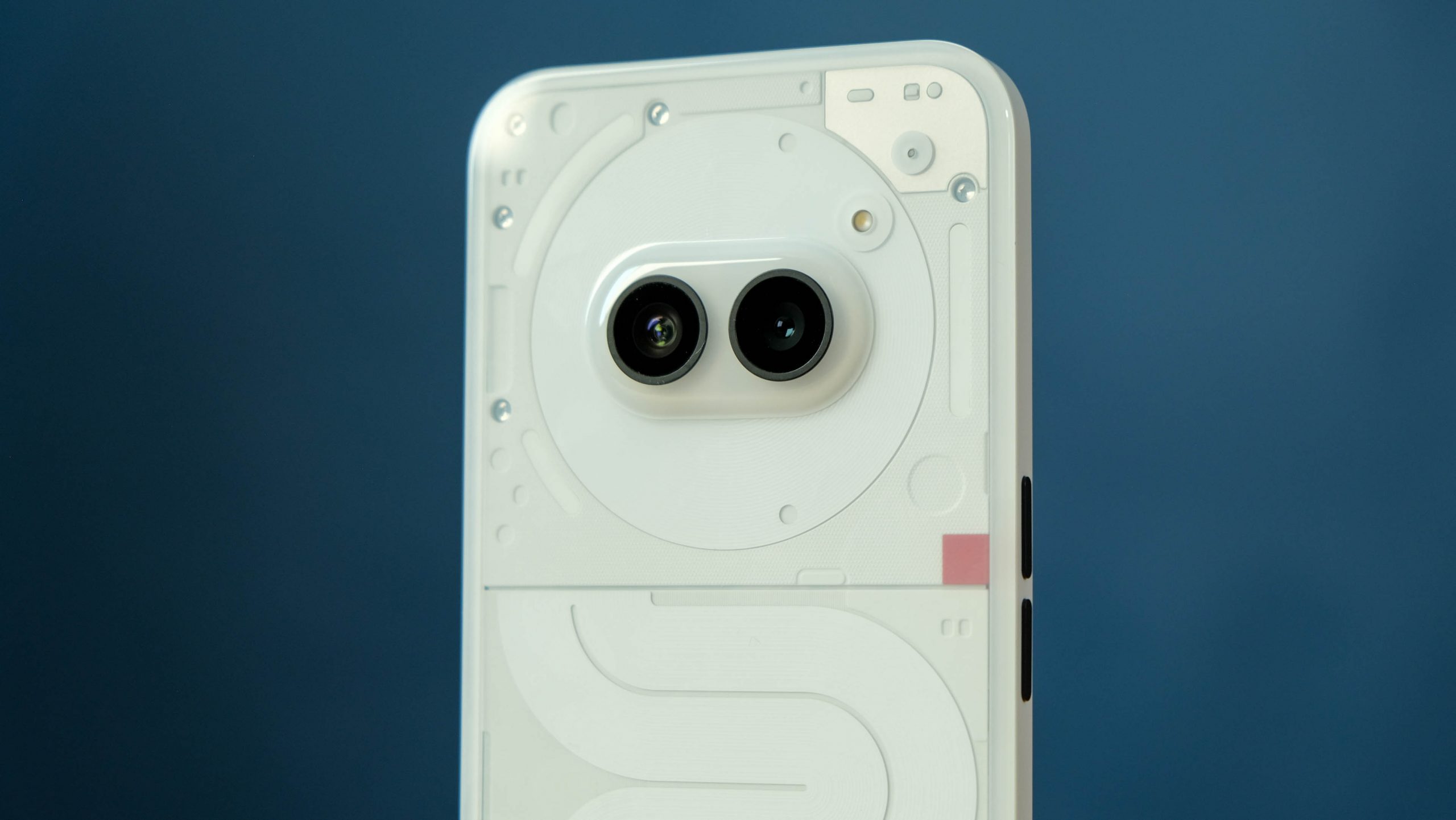
Having a dual rear camera in 2024 almost feels like an anachronism. The standard is three, even if you’re an affordable device, but Nothing has opted to use higher-end sensors and just have two of them. There’s no token 2MP depth sensor here to mollify potential buyers. Both are 50MP efforts, one a wide-angle f/1.9 with optical image stabilisation and the other an ultra-wide f/2.2. They’ll record 4K video at 30fps and 1080p at up to 120fps, but it’s the stills we’re most interested in.
The rear sensors scale down to 12MP images by default, though you can tweak settings to snap full 50MP pictures if you want them. If you stick with the default, the compression brought about by pixel-binning offers substantial detail for your shots. Low-light shots are decent, especially for a budget smartphone, and daylight snaps are even better.
They benefit from Ultra HDR, a Google feature that should spice up your shots. Sometimes it’ll be too enthusiastic but camera performance, as with everything else, is out of keeping with the relatively affordable price.
Up front is a 32MP selfie sensor, which is the same as the one seen in the Nothing Phone 2. Performance is similarly good, if getting your mug on camera is your thing.
Nothing like it
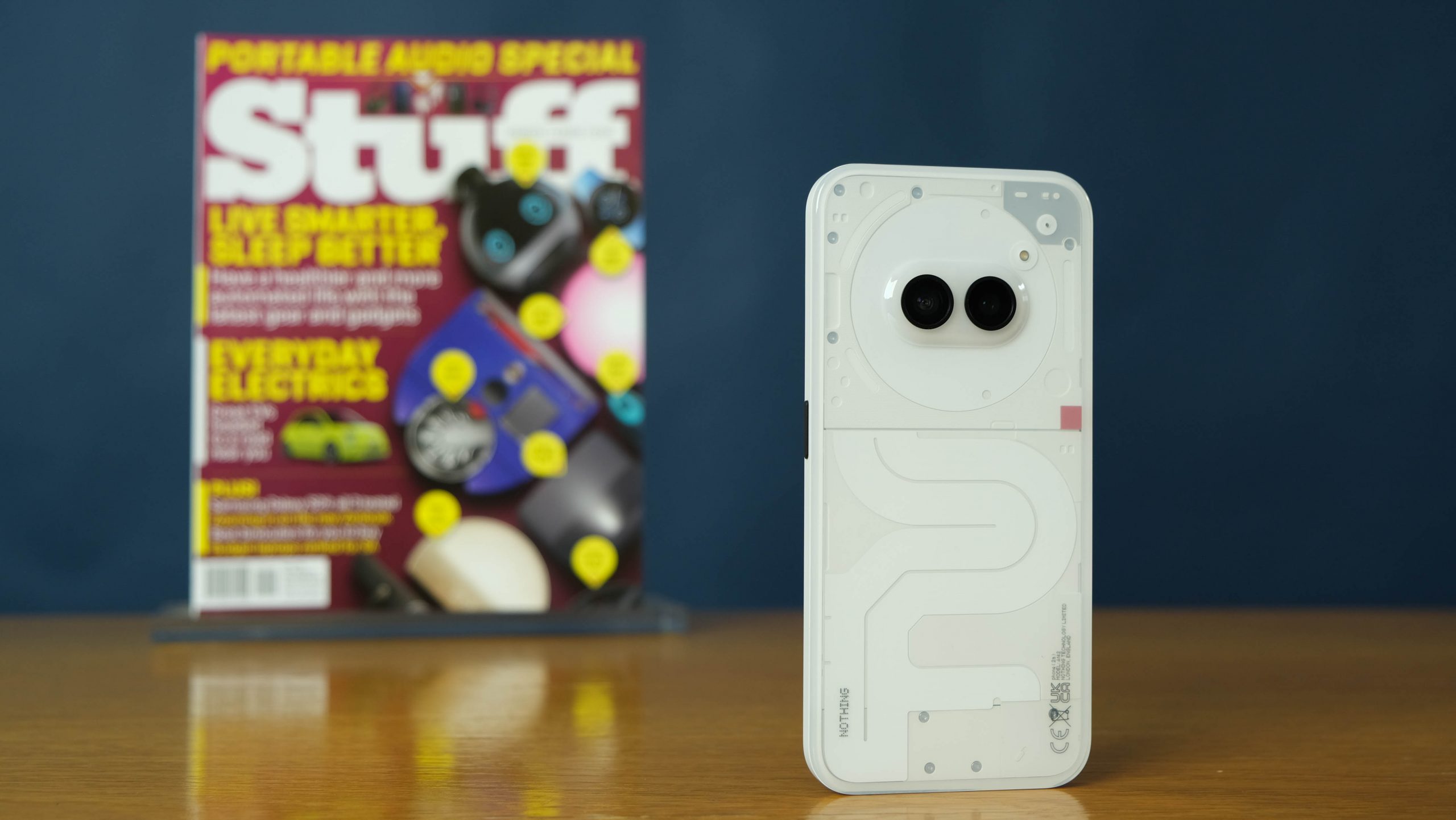
The aspect of the Nothing Phone 2a that took the most getting used to wasn’t the unique rear lighting arrangement. It was the Android 14 operation system, specifically the Nothing OS skin over the top. The swipes and swoops are all in new directions but it’s the stripped-back interface that threw us off.
Usually, when a company goes for a custom skin, there’s added bloat and it’s somehow harder to use. That’s not the case here. Widgets are all understated, the design isn’t busy, and it all feels like the Nothing Phone isn’t trying to get your attention at all. It’s easy to look at and away from, something reinforced by those lights on the rear. Why do you need to spend so much time looking at your screen when you… well, don’t have to.
The retro aesthetic that crops up in places is also pleasingly executed. We were tempted to power the phone down every time it was charging, just for the dot matrix effect that the Nothing Phone 2a (and, presumably, the 2) shows when topping up. 45W fast-charging will get you to speed as quickly as any of Samsung’s flagships, possibly a little faster.
Nothing Phone 2a verdict
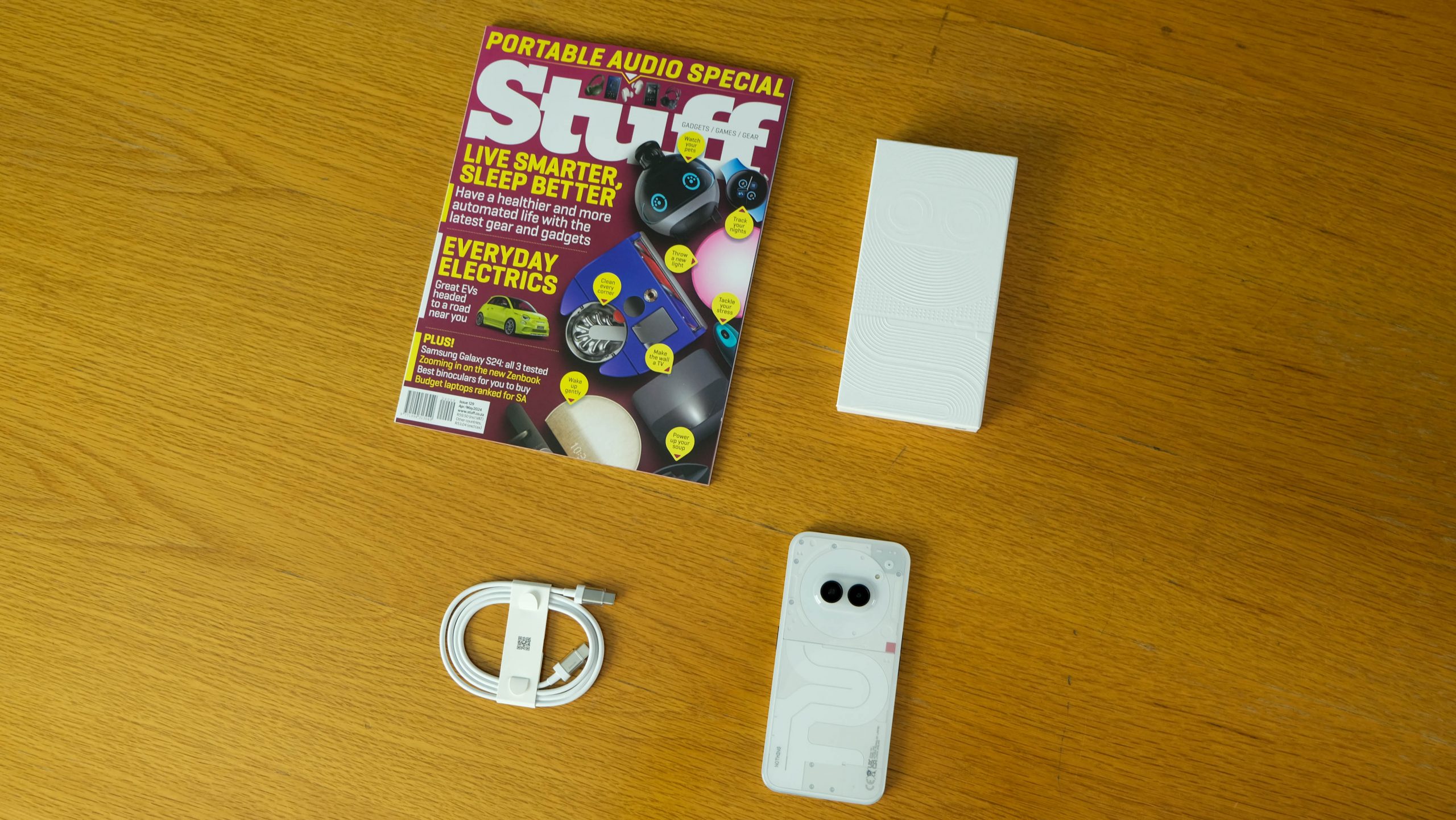
Does all of this make the Nothing Phone 2a a flagship beater? If your budget caps out at R10,000, then you could almost think of it that way but there are better phones out there. Nothing itself makes one, called the Phone 2. Any phone you pay twice the price for will also be better but — and here’s the important thing — it won’t be that much better. You can find more power, a better camera, and a better build, but relatively few phones that do everything as well as the Nothing Phone 2a and at its price point.
This newcomer in the South African smartphone scene is worthy of your time, attention, and yes, even your money. It does something few other phones, and especially other devices in its category, manage. It looks, feels, and handles like a unique device. That’s enough to get our attention. The excellent all-round performance the Nothing Phone 2a exhibits is almost a bonus.

